Archivists, when they hear researchers say that they have “discovered” records in the archives–sometimes described as the “dusty archives” to our chagrin–are likely to respond by saying: “How do you think they got there in the first place!”
The truth is archivists and researchers often work collaboratively in understanding the research value of records. As archivists we seek out and appraise records based on our mandate and on appraisal criteria which include the content of the records and where and how they were created and used, the order and completeness of the records, their condition, as well as aspects relating to their authenticity, reliability and intrinsic value.
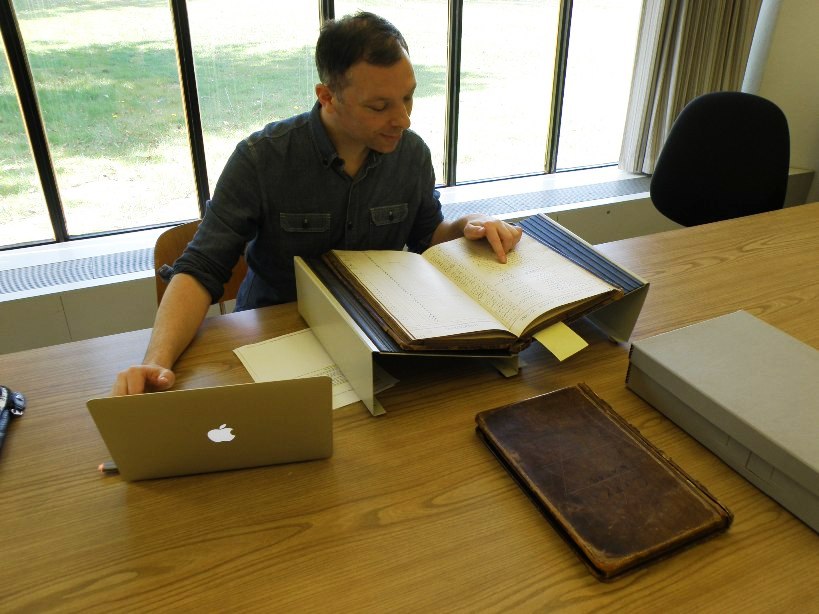
Researchers, however, bring their unique questions to the archives and the records they consult and, in working with researchers, archivists can learn a lot about the records we have acquired, organized and preserved and even how records relate to and add value to one another. I recall, for instance, a glaciologist who worked with tourist photos of the Rockies to learn more about the movement of glaciers over time.
Patrick Gunn is a dedicated Archives’ researcher. He’s on the board of the Heritage Vancouver Society and the lead on the Society’s online database of the City’s Building Permits. This database has become an essential tool for researching heritage buildings. Heritage enthusiasts also refer to the City’s Water Works Department records as a source of information towards determining the building’s original owner, date of construction and use.
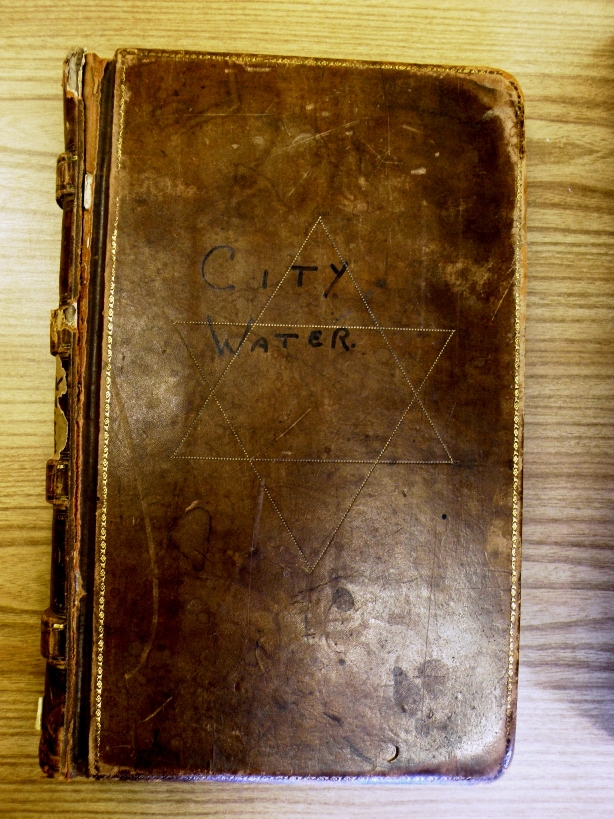
Typically, heritage researchers have consulted the Water service record cards and Water service applications as they are a rich source of information, however, there are gaps in these records. Recently, Patrick realized that the Archives’ holdings included the Water application record books. These 3 volumes are a list of the persons applying for water service and the address in order of the application number, which is also chronological. Since they contain only the very basic information relating to a water service application, they appear to have been little used.
Recently, Patrick demonstrated how useful the Water application record books are by searching for information on the apartment building at 1185 Haro Street, on the corner of Haro and Bute Streets in Vancouver’s West End. There is no Water service record card and no Water service application for this address. In addition, although Patrick was able to locate a reference to the building permit in the Vancouver Daily World newspaper, which narrowed down the construction date to around 1906, the City building permits for 1906 no longer exist.
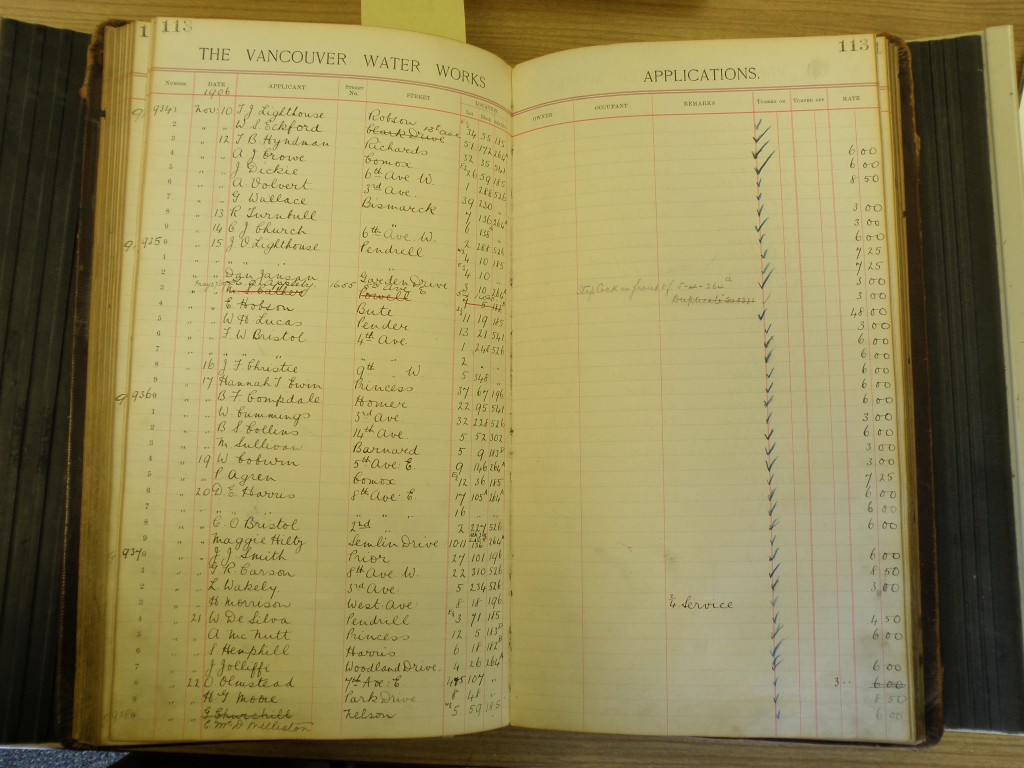
Patrick knew that the building was first listed in the 1907 City Directory but only the apartment residents and not the owner were listed. When he consulted Vol. 1 of the Water application record books for 1906–directories are known to collect their data one year in advance–he found the entry for Application No. 9354 on November 15, 1906 to E. Hobson on Bute Street. Edward Hobson was a local contractor and builder.
Researchers typically use a number of sources to locate information on heritage buildings. These include City records in the Archives such as Property Tax records, Water Service records and Building Permit Registers, other archival records such as maps and fire insurance plans, architectural plans and photographs and online resource such as city directories, VanMap and Google maps. A reference guide to researching historic buildings and houses is available online.
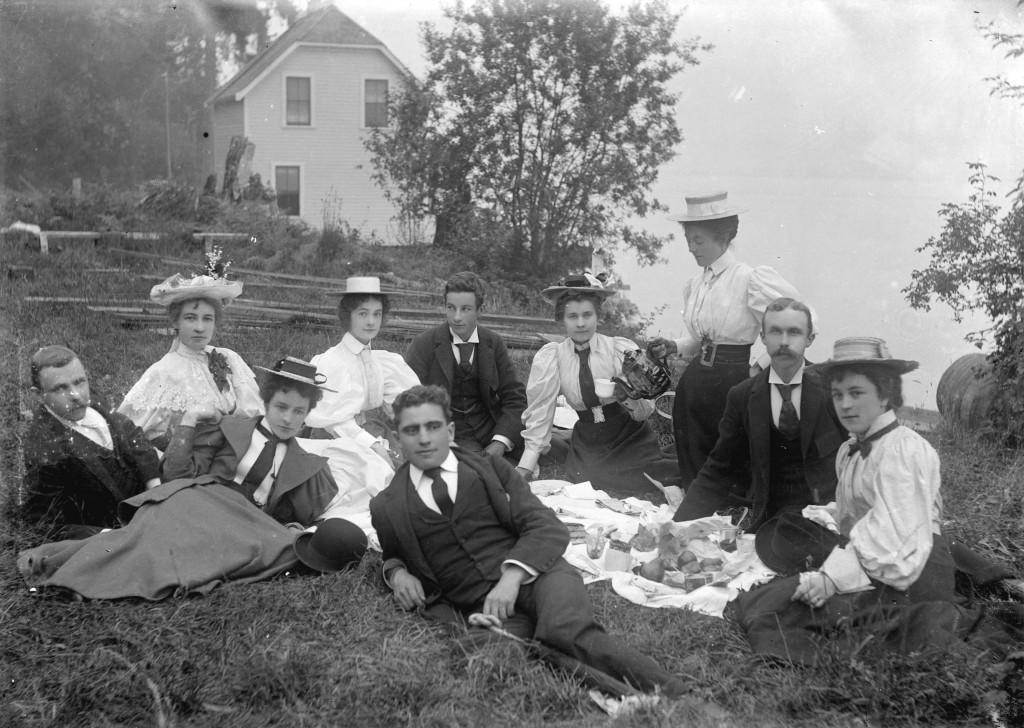
The Vancouver Waterworks Company was incorporated on April 6, 1886, the same day the City was incorporated, by G.A. Keefer and a group of Victoria businessmen to supply Vancouver with water from the Capilano River by means of a pipe laid under the First Narrows. The engineering works were finished and the water first flowed in 1889. In 1891 the rate payers of Vancouver voted to acquire the Company, and the City took it over.
Volume 1 of the Water application record books, where Patrick found his information, was started by the Vancouver Waterworks Company and finished by the City of Vancouver, although there is no note of the transfer of ownership in the ledger.
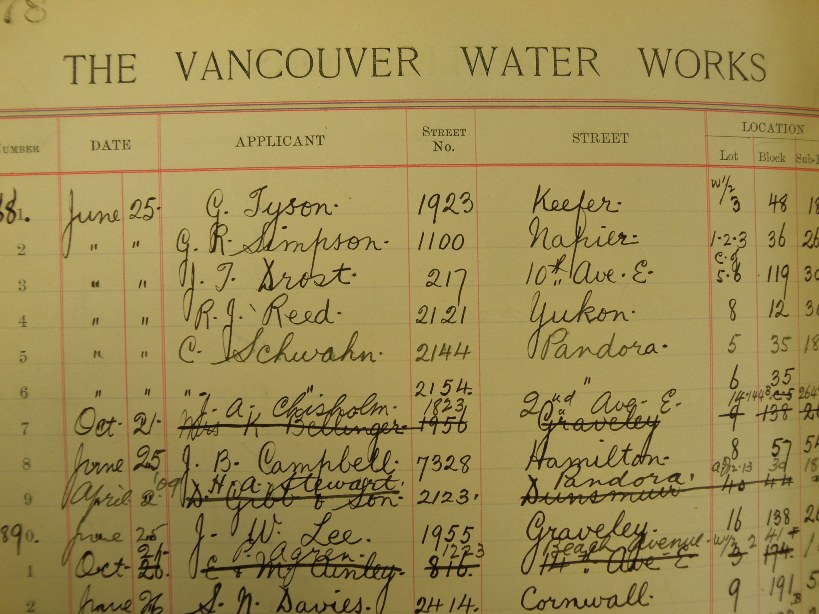
To quote Patrick: “The clerks who originally kept the ledgers were very precise in their entries, the handwriting is clear and legible, and the entries are all complete.” He thinks that the ledgers are another potential project for transcribing and is planning to add the data to the Vancouver Heritage Society’s ever-expanding Building Permit database.


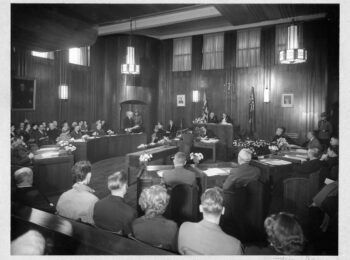
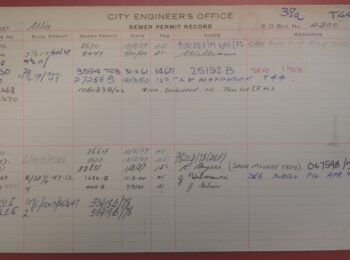
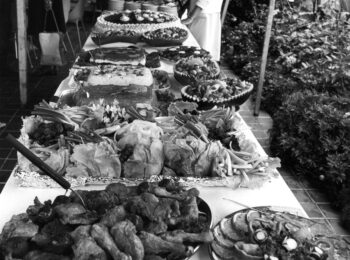
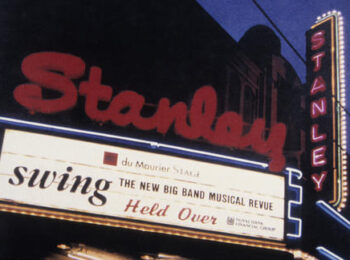
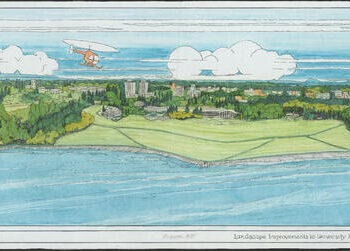
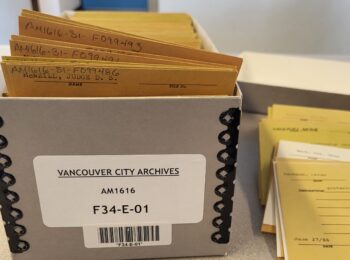
In her recent article on the Atlantic’s website (and perhaps in the printed monthly magazine), Suzanne Fischer also makes the point that discoveries of records in archives are made possible by the archivists, conservators, and other professionals who acquire, preserve, and make the records available to researchers: http://www.theatlantic.com/technology/archive/12/06/nota-bene-if-you-discover-something-in-an-archive-its-not-a-discovery/258538/
And one could add, volunteers and partner organizations also help archives make their holdings available to the public.
I am trying to find out when my mother, Barbara May (Lydiatt maiden name)Graeme sold the house, 6249 on Elm Street and when, I think about 1944, and how much it sold for.
She inheirited it when her mother, Ethel Kezia Lydiatt died in 1941 I do not need copies of anything and I do not need to know who bought it. I know a Mr. Drew built it in 1924 and my grand parents bought it in 1926.
Hello Toni – we won’t have any sale records but you could determine when the property was sold either through the Land Title Survey Authority office (https://ltsa.ca/) or by coming down to the City Archives in Vanier Park to review property tax records. These list the owner, and you’d look at the years surrounding 1944 to pinpoint when the owner changed from one year to the next.
Alternatively, the BC directories would also list the resident or owner. Although not an official record, they are online and are another way to check multiple years: https://bccd.vpl.ca/